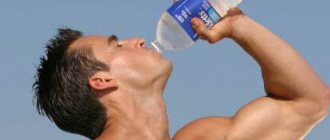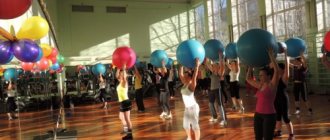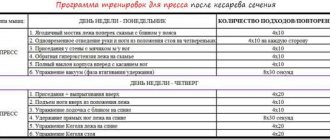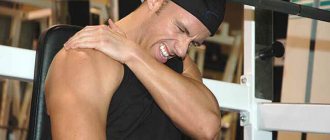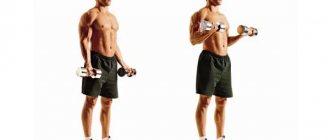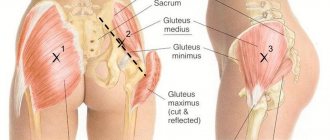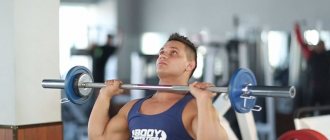Causes of injury
Any excessive load can cause pain in the shoulder joint, which is one of the largest in the human body. The anatomical structure of the shoulder is complex and capable of performing movements in several axes at once, which increases the risk of developing various pathologies in it. Therefore, a bruise of the shoulder joint can have quite serious consequences.
The most unique, yet complex joint in the human body is the shoulder joint. It performs many different movements because the shoulder joint is formed by the connection of bones, muscles and tendons. It takes part in absolutely all movements of the hand and is able to withstand very heavy loads. Therefore, the shoulder is vulnerable to various pathologies, since any injury to the shoulder due to a fall can lead to serious consequences.
You can get such damage at the workplace, especially if it is some kind of production, at home, during sports training, on the playground or on vacation. In this case, both the joint itself and nearby tissues can be injured. Typically the main cause of a severe shoulder injury is:
- a strong beat;
- compression of the shoulder joint;
- careless fall.
An injury to the shoulder joint, after which the arm often cannot be raised, is a common occurrence for young people who actively improve their health through regular exercise. Sports injuries subsequently become the reason why the shoulder joint hurts constantly, and sometimes even at rest.
Such injuries are typical for training in many sports when practicing certain strikes and techniques:
- hockey with a puck or ball;
- golf;
- tennis;
- Weightlifting;
- body-building;
- gymnastics;
- basketball;
- volleyball;
- skiing;
- figure skating.
Any throwing of the ball, practice of hitting the ball with a racket, exercise with weights to develop muscles, or falling during sparring can result in a shoulder bruise that requires treatment. The shoulder joint often begins to become very painful because a fall or blow can cause damage not only to soft tissue, but also to tendons and muscles. Usually, more than just one structure is injured.
A severe bruise of the shoulder, in which the arm cannot be raised, can occur due to a sprain or tear:
- muscle tissue surrounding the shoulder joint;
- synovial bursa;
- tendons;
- joint capsule.
Sometimes a shoulder injury from a fall can result in damage to the bone structures. This injury most often occurs during a fall from a great height or during a transport accident. Lacerations and fractures that accompany a bruise can cause arthrosis of the shoulder joint in the future. In order to avoid pain and contracture that appears after an injury, attention should be paid to comprehensive treatment.
In order to exclude a crack, dislocation or fracture, it is recommended to consult a traumatologist. A specialist will examine the site of the injury and explain how to treat a severe shoulder injury. Self-medication is very dangerous, as it can cause serious consequences. Only a doctor can assess the scale and complexity of the injury and suggest a treatment method for the bruise.
Diagnostics
The diagnosis is made by a doctor based on a survey and examination of the patient. Because the symptoms of a shoulder sprain are similar to those of a shoulder dislocation and a fracture, it can sometimes be difficult to separate the two. To clarify the diagnosis, the following may be prescribed: X-ray examination of the shoulder joint, ultrasound of the shoulder joint, which allows one to assess changes in the condition of the soft tissues. For a more detailed assessment of changes in soft tissues, an MRI is sometimes prescribed, but this is rarely required.
Find out more about preparation for the MRI procedure and contraindications from Elena Aleksandrovna Mershina, Candidate of Medical Sciences, Head of the Tomography Department at the Central Clinical Hospital:
Symptoms
The consequences of any injury are severe pain. And the victim needs qualified assistance and treatment. The appearance of symptoms of damage will depend on:
- impact forces;
- fall heights;
- the presence of concomitant injuries to the shoulder joint.
The main symptoms of a severe shoulder injury that require treatment are as follows:
- sharp pain in the shoulder when trying to raise your arm;
- manifestation of extensive swelling in the area of the shoulder joint;
- limited mobility of the injured upper limb;
- feeling of discomfort during active movements of the hand;
- redness of the skin at the site of the injury;
- increased temperature in the area where the injury is located;
- formation of a hematoma or bruise on the shoulder.
Pain in the shoulder joint is not only the cause of severe suffering, but will also lead to a partial loss of the ability to perform normal daily activities, which are impossible to do without.
As a result of the bruise, nerve endings or blood vessels may be affected. In this case, the patient complains of severe discomfort in the shoulder area, which manifests itself in the form of:
- tingling;
- loss of sensitivity;
- general weakness.
The cause of bruising is the rupture of small blood vessels under the skin due to a direct blow or twisting. Due to the penetration of blood into the soft tissues, the skin becomes blue or black, which changes its hue to purple. Over time, the injury site turns green and yellow during the healing process.
If the patient is re-injured, his condition will deteriorate sharply. If you refuse treatment or if the therapeutic course is not carried out in full, the victim may experience complications:
- inflammation of the joint membrane;
- accumulation of blood in the joint cavity;
- inflammatory process in the area of the synovial bursa of the joint;
- tendon inflammation.
As a result of such negative consequences, a person’s performance decreases sharply. The victim requires mandatory consultation with a specialist. It is especially important to contact a traumatologist if the sensitivity of the injured limb is impaired. This may be an indicator of more serious damage. The doctor will explain how to treat a shoulder injury after a fall.
The injured shoulder becomes red, swollen and hot. The victim complains of sharp pain and difficulty raising his arm. Often there is a pulsation at the site of injury or in the shoulder itself. In addition, the shoulder joint greatly increases in size. After receiving a bruise to the shoulder joint, such symptoms require close attention. All these signs are a reason to go to the emergency room, where the patient will not only be examined, but also x-rayed.
Fracture
A shoulder fracture is a rare injury. This problem is more relevant to people of retirement age, since their joint structures are susceptible to degradation processes. A fracture can occur when you fall and land on your elbow or bent arm.
Symptoms
Symptoms include cutting pain in the shoulder area, which increases when trying to move the arm. As a rule, the victim experiences severe swelling in the area of the fracture, and any movements of the hand connected to the injured shoulder are difficult and are accompanied by attacks of pain.
If you suspect a fracture, you should consult a doctor who will conduct an examination and order an x-ray. Otherwise, the bone tissue disorder may not be detected, which means the bone will not heal properly.
Treatment
A shoulder injury complicated by a fracture requires long-term treatment. Damage correction methods:
- surgical intervention (in case of displacement of bone fragments);
- plaster immobilization of the arm;
- immunomodulators and calcium-containing drugs.
Rehabilitation
Proper rehabilitation after a fracture is no less important than treatment. Since the joint is immobilized for a long time, arthrosis may occur some time after the cast is removed. Simple self-massage of the upper limb and a complex of exercise therapy (physical therapy) will prevent the development of joint diseases.
When to contact a specialist
Only the first degree of injury does not require a mandatory visit to the trauma department. If you can’t raise your arm after a bruise, then this is a reason to go to the emergency room. The consequences of damage can be assessed by the severity of external signs and sensations. But due to painful shock, the victim is often unable to realize the seriousness of the situation. Therefore, the right decision would be, after receiving a shoulder injury, to consult with a specialist who will tell you how to relieve the pain and prescribe treatment.
Self-diagnosis will help you make sure that you need to visit the emergency room. There are several important points to clarify:
- how severe is the pain, and is it possible to endure it;
- whether the arm rises and turns in all positions;
- Is it possible to do normal daily activities with the injured hand?
If all these points are impossible, then you should seek help from a traumatologist. Perhaps this is not an ordinary banal bruise. Timely x-ray diagnosis will help identify the complexity of the injury. If you do not start a therapeutic course on time after an injury to the shoulder joint due to a fall, then there is a huge likelihood of developing post-traumatic arthrosis in the future.
Classification of shoulder injuries
Damage to the shoulder girdle can be minor or extremely serious. The type of injury depends on the nature of the damage and on the anatomical structures that were damaged as a result of aggressive external influences. Main types of clinical cases:
- broken shoulder injury (fracture);
- dislocations;
- sprains;
- micro and macro tears of muscle fibers;
- bruises.
Both superficial anatomical structures and deeper tissues can be damaged: skin, muscles, tendons and ligaments, bone tissue, joint structures, blood vessels and arteries, and nerve endings.
First aid
When falling, a person most often injures the shoulder and upper limbs. If the victim fell on his side and hit his shoulder hard, he needs immediate first aid. The algorithm of actions in this case should be as follows:
- Peace . The injured shoulder joint should be immobilized. This will help reduce pain. Also, a fixing bandage will help not only give rest to damaged soft tissues, but also prevent complications. If the bruise is accompanied by a fracture, bone fragments can damage the muscles and tendons during movement. For immobilization, it is recommended to use an elastic bandage or any available means. If the arm does not rise when the shoulder is bruised, you should fix the arm pressed to the side. The victim needs to take a position in which he feels better.
- Cold . It is necessary to cool the injury site. To do this, you can use a napkin moistened with cool water, attach a bag with pieces of ice or any cold object from the freezer. This procedure will help to quickly relieve pain after a shoulder injury and prevent the appearance of a bruise. A cooling compress causes vasospasm, which in turn prevents blood from flowing out of damaged capillaries. Cold prevents widespread swelling.
- Pain relief . You can also relieve pain from a shoulder injury with a pill. It is recommended to give the victim Analgin or Ketanov.
- Consultation with a specialist . It is necessary to call an ambulance and take the victim to the trauma department. The traumatologist will examine the patient and tell you how to treat a bruised shoulder joint.
If the injury is first degree, then it is enough to use a bandage in the form of a scarf, this will help relieve the load from the injured shoulder. This is especially important to do in the case when the arm cannot be raised after a bruise. But if the injury is complicated by the presence of an open wound, abrasions or scratches, then it is recommended to apply a sterile bandage. The presence of bleeding requires the application of a pressure bandage.
Physical therapy at the third stage
The goal is to restore motor skills and return the athlete to sports.
The beginning of the period is 1.5–2 months after the injury, duration is up to 6 months.
A traumatic exercise on the simulator is the pull-down of the upper block behind the head.
Classes are conducted using various devices, sports equipment and exercise machines. Complex exercises are divided into separate elements that make them easier to perform. Exercises in water are of great importance. The resistance of the environment slows down movements, turning them from speed to power. This enhances the therapeutic effect, allowing you to start doing gymnastics in the pool earlier than in the gym.
A traumatic exercise is the overhead pull-down.
Gymnastic complexes include special exercises aimed at strengthening joints, developing flexibility and muscle strength appropriate to the patient’s sport. How to strengthen your shoulder after an injury: Perform exercises for individual muscle groups. During gymnastics, various variations of bench presses from a standing or sitting position, and lateral raises with dumbbells are used for the deltoid muscles. To train the triceps - push-ups and extensions of the limbs at the elbow joints. The scapula muscles are strengthened by rotational movements in the shoulder joints.
There are a large number of exercises for training for a shoulder injury. At the stage of sports rehabilitation, it is enough to perform 2-3 exercises for each muscle group, always under the supervision of a sports medicine specialist. The final stage of treatment for sports shoulder injuries is no different from the training process in terms of the volume of physical activity.
Diagnostic examination
Any injury requires diagnosis, so it is recommended to go to the emergency room immediately after an unpleasant incident. The doctor will examine the victim with a bruised forearm and advise on how to relieve pain and what treatment will be needed in each specific case.
One examination is not enough, and the patient will be prescribed an examination to make a more accurate diagnosis and determine the nature and complexity of the damage. These factors depend on how and where the injury occurred. The degree of injury is determined by the presence of other injuries:
- muscle ruptures;
- cracks or fractures of bones;
- tendon sprains;
- dislocation of the shoulder joint.
Timely diagnosis will help you quickly determine the correct diagnosis and begin a course of complex therapy. Proper treatment is an opportunity to quickly recover from an injury. The diagnosis can be made based on:
- visual examination of the patient by a traumatologist;
- clinical picture;
- interviewing the victim.
After these procedures, a series of diagnostic tests will be needed to rule out more serious injuries, such as a fracture or crack in the shoulder joint, that require treatment. Usually the patient is prescribed:
- X-ray of the shoulder joint or, in a more complex case, the entire arm;
- MRI of the injured shoulder;
- Ultrasound of the joint;
- X-ray or MRI of the spine if the injury was caused by a road traffic accident;
- general blood and urine tests;
- if necessary, an electrocardiogram.
If a serious complication is suspected, the traumatologist suggests undergoing magnetic resonance or computed tomography. Only after receiving all the results will the doctor be able to make the correct diagnosis and explain to the victim how long the shoulder bruise will hurt.
Rupture of muscle tissue
Muscle tissue breakdown is largely the result of lack of physical activity. Due to insufficient dynamics of the shoulder region, the blood supply to the muscles is disrupted and the fibers “dry out”. And with a sharp and rough impact on the upper limb, tissues that have lost elasticity simply tear.
Causes
Muscle damage may be associated with anatomical features of the structure of the shoulder region (congenital anomalies in the location or shape of cartilage). But it can be provoked by very sudden movements or “stretching” of the hand.
Symptoms
The most important symptom is loss of sensation in the forearm and hand. Ruptures of muscle fibers are accompanied by pain (the larger the area of damage, the stronger the pain), loss of functional features (the inability to perform simple movements).
Treatment
A patient with a suspected muscle tear should have an x-ray and see a surgeon. And only after an in-depth analysis of the degree of damage, the doctor will decide how to treat the injured person.
- local rupture (partial) is treated with special exercises, dosing loads and local anesthesia;
- a complete avulsion is treated with surgery in which the muscles are sutured.
Without treatment, muscle recovery does not occur! The fibers dry out and become deformed, and the limb ceases to function completely.
Treatment
After providing first aid to the victim, he needs to be helped to get to the trauma department. At a medical facility, a doctor will examine the patient and advise how to treat a shoulder injury.
The basic principles of treatment for such injuries include the following points:
- application of an immobilizing bandage or fixing bandage based on the results of examination of the injury;
- prescribing non-steroidal anti-inflammatory drugs to reduce pain;
- physiotherapeutic procedures for quick rehabilitation after injury.
When the shoulder joint is bruised, sharp pain immediately appears. Multiple hemorrhages and hematomas lead to unpleasant sensations and discomfort. The therapeutic course begins with a diagnostic examination, which makes it possible to exclude or, conversely, promptly identify degenerative changes in the tendons and bones in the area of the injured shoulder.
The specialist will also recommend how to relieve pain after a shoulder injury. Typically, the doctor prescribes one of the non-steroidal anti-inflammatory drugs, which belong to the group of non-hormonal drugs that have an anti-inflammatory effect. This list includes the following medications:
- Ibuprofen;
- Analgin;
- Naproxen;
- Aspirin;
- Nimesulide;
- Ketoprofen;
- Meloxicam;
- Diclofenac;
- Piroxicam.
Non-steroidal anti-inflammatory drugs have a pronounced analgesic, anti-inflammatory and antipyretic effect. The mechanism of action of such drugs is to slow down the formation of tissue hormones called prostaglandins. They are the cause of the development of the inflammatory process and the accompanying painful manifestations.
All these drugs are available in different forms for the convenience of patients. It can be:
- pills;
- ointments;
- gels;
- suppositories;
- capsules;
- solutions for injections.
Prescribing such drugs is possible only after the attending physician receives all the information about the patient’s health status. Therefore, the victim should tell the traumatologist the following important facts before starting a therapeutic course of non-steroidal anti-inflammatory drugs:
- the presence of pathologies of the liver and kidneys;
- an allergic reaction to salicylates or any other medication;
- pregnancy;
- breast-feeding;
- the presence of a stomach or duodenal ulcer;
- a list of other medications taken by the patient.
You cannot prescribe medications for yourself. The choice of treatment method and appropriate medications is the prerogative of a specialist. Therefore, if a victim has shoulder pain from a bruise, he is advised to consult with his doctor about what to do in this case. If the shoulder joint is bruised, according to the symptoms, the traumatologist selects the appropriate treatment.
In addition, there are certain rules for taking non-steroidal anti-inflammatory drugs, so consultation with a specialist is very important in case of injury. The victim should take medications as prescribed by the doctor.
The patient must follow the following recommendations of the traumatologist:
- Non-steroidal anti-inflammatory drugs should be taken at least one hour after meals.
- The tablets should be taken with a sufficient amount of liquid. In most cases, this should be regular drinking water.
- It is recommended to constantly replenish the supply of medications so as not to interrupt therapy. If necessary, you should always have them with you and keep them at hand.
- It is strictly forbidden to increase the dose prescribed by the doctor or take more tablets.
- In case of overdose, consult a doctor or call an ambulance.
- You should not share your medicine with family members, even if you have similar symptoms. The doctor prescribes each drug individually based on the diagnosis and results of a diagnostic examination. For each victim, the traumatologist prescribes how to treat a shoulder bruise in a specific case.
- If for some reason a dose of medication is missed, you should not take a double or additional dose of the drug. You should continue taking medications as usual.
- If the patient does not feel improvement while taking the prescribed medication, he should discuss this with his doctor.
Very often, the use of non-steroidal anti-inflammatory drugs can cause a number of problems, which the patient should be aware of. During the therapeutic course, the patient may encounter the following difficulties:
- The skin may have negative manifestations in the form of rash, itching, swelling or burning.
- Very often there are disturbances in the functioning of the gastrointestinal tract. The patient may complain of constipation, nausea, abdominal discomfort, or heartburn.
- Tests may show increased liver enzyme activity.
- During a long therapeutic course, due to large doses of the drug, there is a risk of developing side effects from the gastrointestinal tract. In rare cases, peptic ulcers or gastric bleeding may be diagnosed.
- Sometimes patients experience attacks of dizziness and extreme fatigue.
The patient should report any deviations or negative manifestations to his doctor. Long-term use of such drugs requires regular monitoring of certain parameters that reflect liver and kidney function. Monitoring of peripheral blood parameters is also required. If one of the indicators shows a negative result, you should stop taking the medication. Your doctor will choose another drug to treat a shoulder injury from a fall.
If on the first day after the injury it is recommended to apply only cool compresses to the site of the injury, then on the second day to improve the resorption of the hematoma, it is recommended to use the following means:
- mesh with iodine at the site of damage;
- medications to relieve pain and reduce inflammation;
- warming compresses;
- the use of folk recipes for bruised shoulder joints in treatment.
Massage or self-massage is allowed only after the pain has passed. Such manipulations will help restore motor activity of the shoulder joint. You can begin performing procedures after receiving permission from your attending physician. Since in case of a severe bruise, the victim is recommended to adhere to bed rest for the first few days.
It is strictly forbidden to rub the bruise immediately after the injury. Such actions can lead to complications in the form of thrombophlebitis, which occurs due to the formation of blood clots in the damaged area. If, with timely assistance and treatment of the injury, the hematoma does not resolve within a week, it is necessary to consult with your doctor. The specialist will also explain how long shoulder bruises hurt.
Super exercises for improving shoulder tone
You use your shoulders countless times every day. You wash your hair, lift your children or grandchildren, open the car door - just think how difficult life will be if your shoulder muscles stop working.
You may know this first-hand, as 7.5 million people see a doctor every year because of shoulder problems. In addition, according to the American Committee on Physical Education, two out of three adults will experience some type of shoulder dysfunction during their lifetime.
The shoulder is a complex ball joint that is used to expand, rotate, flex and more. It consists of three different muscles - the anterior, middle and posterior deltoid, which provide all these complex movements of the shoulder.
However, despite their importance and vulnerability to injury, many people forget to train their shoulders the same way they train other muscle groups - in the legs, core or arms.
But by building shoulder strength, you can help prevent common shoulder injuries and support optimal shoulder function throughout your life.
The American Exercise Science Committee teamed up with researchers from the University of Wisconsin Lacrosse Department of Clinical Exercise Physiology to determine which exercises are most effective specifically for the shoulder muscles.
After testing 10 common shoulder exercises, a few of the best were identified, depending on which of the three main muscles they targeted:
Standing Dumbbell Press: Best for the anterior deltoid, which is the muscle at the front of the shoulder.
45-degree press: Works best on the medial deltoid, although lateral raises have also proven effective.
Seated or 45-degree dumbbell flyes: Both of these exercises are effective for targeting the posterior deltoid and provide significant work on the muscles at the back of the shoulder.
". Ultimately, there are many good exercises for working your shoulders, says John Pocari, Ph.D., director of clinical exercise physiology at the University of Wisconsin Lacrosse.
If you're not planning on going to the gym, you can still significantly tone and strengthen your shoulders using a combination of bodyweight exercises, dumbbells and resistance bands.
Shoulder pain is often the result of repetitive movements that cause the soft tissue in the shoulder area to break down. Common culprits include sports such as tennis, throwing and weightlifting, but activities at work and even everyday activities such as washing windows or gardening can also cause pain.
Repetitive strains are common in office workers, and one study identified five exercises that are helpful for neck and shoulder pain in women who work in office and suffer from trapezius myalgia (pain in the upper trapezius muscle).
Researchers recommend performing these exercises 3 times a week (for example, Mondays, Wednesdays, and Fridays), alternating exercises 1, 2, and 5 on one day, and exercises 1, 3, and 4 on another day. Initially, perform 2 sets of each exercise with 8-12 repetitions. At your own pace, complete the exercises up to 3 sets.
Depending on the exercise and muscle strength at the moment, the recommended weight for beginners is 2-5 kg.
The general rule is: increase the weight when you can comfortably complete all 3 sets.
As a guide, study participants approximately doubled their weight over 10 weeks. After about four weeks, you can reduce the number of repetitions of the last set to increase the weight.
“Lie on a bench at an angle of 45°, lowering your hands with dumbbells to the floor. Raise the dumbbells outward and upward until they are horizontal, then lower the weight in one controlled movement. During the exercise, your elbows should be slightly bent (
5. Raising arms to the sides
“Stand up straight with your arms at your sides with the dumbbells at your sides. Raise the dumbbells outward and upward until they are horizontal, then lower the weight in one controlled movement. During the exercise, your elbows should be slightly bent (
If you're looking for another way to stretch, strengthen and tone your shoulders, try planks. In addition to building strength, the plank increases the flexibility of the posterior muscle groups. The muscles around the shoulders, collarbone and shoulder blades will expand and stretch (an area that often gets little attention).
In addition, the plank works all the muscles necessary to maintain correct posture - the muscles of the back, chest, shoulders, abdomen and neck.
If you do the plank regularly, you will feel that it will be easier for you to sit or stand straight.
Thus, the face-down plank engages the following areas of the upper and lower body: abdominals, lower back, chest, shoulders, upper trapezius, neck, biceps, triceps, glutes, thighs and calves.
The American Committee on Physical Culture recommends performing the bar as follows:
For optimal health and fitness, I recommend incorporating a variety of exercises into your workout, focusing on daily movement beyond exercise. Ideally, you should be active and stay on your feet most of the day so that sitting interrupts your activity rather than the other way around.
A well-designed fitness program includes a little of everything, but on a regular basis:
1. Sit as little as possible. The research on this issue is clear: the more you sit, the greater the risk to your health. And this applies even to those who are in great shape and exercise regularly!
In addition to limiting your sitting time as much as possible, I also recommend taking 7,000-10,000 steps per day. This is on top of your normal program of exercising and standing while working. Consider investing in a new fitness tracker that can help you monitor your steps and sleep, helping you track your daily movements.
2. High-intensity interval training (HIIT): This is where you alternate short bursts of high-intensity exercise with gentle periods of recovery.
3. Core Exercises: There are 29 major muscles in the body, located primarily in the back, abdomen and pelvis. This muscle group provides the foundation for movement throughout the body, and strengthening them will help protect and support your back, reduce the likelihood of injury to your body and spine, and gain greater balance and stability.
4. Stretching: My favorite type of stretching is the active isolated stretches developed by Aaron Matthes. By performing active isolated stretches, you hold each stretch for just two seconds, which responds to the body's natural physiology, improves blood circulation and increases the elasticity of joint muscles. This method allows the body to recover and prepare for everyday activities.
5. Strength Training: Supplement your workout routine with one set of strength training to optimize the benefits of regular exercise. By performing exercises at a slow pace, you will turn them into high-intensity exercises. Published by econet.ru.
If you have any questions, ask them here
Did you like the article? Write your opinion in the comments. Subscribe to our FB:
The shoulder is a complex ball joint that is used to expand, rotate, flex and more. It consists of three different muscles - the anterior, middle and posterior deltoid, which provide all these complex movements of the shoulder
Ointments for shoulder injuries
In complex therapy during the rehabilitation period after injury, various ointments, gels and creams are usually used. Their effect on injured soft tissue is determined by the properties of their constituent components. Some gels cause severe skin hyperemia:
- Efkamon . The drug is intended for the treatment of inflammatory pain. The main active ingredients are methyl salicylate and menthol. The ointment additionally contains camphor. When applied topically, the product quickly appears and maintains a feeling of warmth. This helps to quickly relieve severe pain in the bruised area. Skin pathologies and bronchial asthma are contraindications for the use of the drug. In any case, it is recommended to consult with your doctor. A specialist will tell you how to relieve pain from shoulder bruises.
- Finalgon . The ointment improves blood flow and has a long-lasting warming effect. The maximum warming effect begins to appear after half an hour; to consolidate the result, it is recommended to cover the bruised shoulder with a woolen scarf after applying the drug. Care should be taken when using the product. It is necessary to avoid getting the ointment in the eyes, on the mucous membrane, open wounds and abrasions. In the post-traumatic period, the effect of the drug can be enhanced with massage.
- Gymnastogal . The drug has an analgesic and anti-inflammatory effect. The ointment should be applied with light massaging movements. In case of severe bruise, it is recommended to use it together with Vipratox. Before you start using the product, it is recommended to consult a traumatologist. The specialist will explain how and how to relieve pain from a shoulder bruise.
To relieve swelling and inflammation, completely different remedies are prescribed:
- Hirudoid . The ointment helps improve blood supply to the skin. The product has a relaxing and analgesic effect, promoting rapid healing of soft tissues. The drug should be applied to the bruised shoulder with light massaging movements until it is completely absorbed. If the injury was complex and the shoulder bruise hurts for a long time, it is recommended to generously lubricate the damaged area of the body with ointment, covering as large an area as possible, and then apply a bandage. Treating the bruised area for a week will give good results.
- Lazonil . The ointment has the property of penetrating deep-lying muscle tissue. The drug acts as an anti-inflammatory and analgesic. The ointment is used twice a day, applied in a thin layer and gently rubbed into the sore shoulder. The drug can only be taken for closed injuries. The use of the drug in the presence of abrasions and wounds, bleeding, infectious diseases, and in areas of infection is not allowed.
- Heparin ointment . The product is used to resolve bruises, hematomas and bruises. The drug effectively relieves pain on a bruised shoulder. It is recommended to use the ointment three times a day. The therapeutic course is one week. Thanks to the product, new bruises and bruises will no longer appear. Therefore, in the case when a person has severely bruised his shoulder and does not know what to do to resolve the hematoma, he can use this ointment.
Swelling and pain that appear after injury are a consequence of damage to small vessels, hypoxia of soft tissues and increased capillary permeability. The result of this effect is a deterioration in blood circulation. Due to the bruise, blood flow and tissue nutrition are disrupted. The regeneration process slows down significantly. It is necessary to consult with your doctor on how to relieve pain from a shoulder injury.
The use of ointments, gels and medicated creams helps solve all these problems. The action of such drugs is aimed at:
- anesthesia;
- preventing skin irritation;
- resorption of bruises and swelling;
- normalization of blood circulation;
- activation of tissue regeneration.
In case of severe pain due to a shoulder injury, treatment should only be prescribed by a specialist. You cannot choose your own ointment. Many drugs can only be used for certain purposes. For example, in case of acute injury, it is not allowed to use highly irritating ointments that cause hyperemia. In this case, it is recommended to use an ointment with analgesic and anti-inflammatory effects. Typically, such drugs are made based on heparin, plant extracts or anesthetics.
It should be remembered that for fresh injuries the ointment should not be rubbed in. Such actions can cause tissue hyperemia. It is recommended to use gels that have better absorption capacity and cooling effect. During the rehabilitation period after injury, the doctor usually prescribes medications whose purpose is to improve microcirculation in the tissues. When choosing a remedy, in any case, you must consult a traumatologist. The specialist will explain how to relieve pain from a shoulder injury.
How to get rid of shoulder pain when bench pressing and more
If you experience pain while bench pressing and cannot continue to train fully, then the information in this article will be very useful to you.
And so you have a problem with the bench press, that is, your joints hurt while doing this exercise. Let’s immediately agree that you strictly adhere to the correct technique for doing bench presses. It is advisable for a trainer or at least an experienced partner to observe you and confirm the correctness of your technique. It is necessary that you are 100% sure, that is, have received confirmation from an experienced athlete that you are benching correctly, that you are following the advice to press correctly, to press hard. Use the correct muscles and the correct amplitude and force vectors of each muscle during the exercises.
Next... You immediately need to understand, and this applies to any exercise, that the movements of your muscles during training are a product of your vital activity outside of training. Correct posture determines the quality of your workout and the results from your workouts.
Remember: technology equals functionality. And technique includes not only the correct execution of the exercise. What your body actually is dictates what happens during exercise. Therefore, you need to pay great attention to the development of posture, body integrity, synchronization of joints, and eliminating muscle imbalances. They define who you really are and that's more important than what you do in training. This is the basis on which you do what you do. All this needs to be given close attention. You can do everything right, but if there are problems with the base, then the correct technique will still not give the desired results. Everything that happens in one part of the body, for example, psychology or physiology, always affects the functioning of other components. But most often we see only the tops of dysfunctions that actually lie much deeper.
So, if your shoulder hurts while doing the bench press, then the first place to look for the problem is a tight pectoral muscle. The strength of the muscle at the top, in the middle of the back, that is, the ability to keep the chest tight. This is the most likely cause of the problem, and most likely the problem is there, and not in the shoulder or in the integrity of the body. And most likely you have a weak back and your shoulders hurt due to a weak back. And the problem is definitely in your back, if it is round and your posture is incorrect. Your shoulder blades should be pulled back and down. For many, the shoulder girdle simply moves forward due to a large imbalance, and this all goes along with turning the arms inward. This is very dangerous because you have weak deep muscles associated with the internal stability of the body. These are the muscles that are closest to the joints, they are not visible, but they are extremely important.
Therefore, I will tell you about one exercise that you can immediately put into practice to get rid of shoulder pain. But first, I suggest watching a video with tips that will help preserve the shoulder joint when bench pressing.
This exercise will be very difficult for people with poor shoulder mobility. And at the same time, it will serve as a better indicator of the health of your shoulders. And besides the fact that it will show how healthy your shoulders are, it will strengthen those muscles of the body that are often weak and prevent the body from becoming whole.
To perform this exercise you will need a stick. A common stick that weightlifters train with when learning the techniques of many exercises.
Lie face down on the floor. Next, you need to rest your toes on the floor, lift your quadriceps and squeeze your buttocks. We stretch our arms forward, take the stick with a wide grip, lift our shoulders off the floor and rotate the stick all the way to the lower back. It's probably better to watch this moment on video. In this exercise, you must arch your back and tighten your pectoral muscles, otherwise you will definitely not be able to move your arms with a stick to your lower back.
Pay attention when it passes over your head and you are already moving it there, you can notice that your arms are turning outward. This is useful, and you can also feel the tension in the back muscles, in the posterior delta, rhomboid muscle, and trapezius. You force all these muscles to contract, force them to become stronger so that you can crank that stick back. This exercise stretches the biceps, latissimus dorsi muscles and forces you to tighten your pectoral muscles and stretch the muscles located in front.
But many of you who do a lot of bench presses won’t be able to do this kind of arm cranking. But it normal. It’s worse if you just say that you don’t need it and your shoulders don’t hurt. Your shoulders may actually be fine, but your neck may still hurt and you may have a headache. Problems can show up anywhere if you don't have body integrity in all movements at all joints. Any ailments may be associated with this problem.
The bottom line is that all the obvious manifestations of diseases can be completely different from person to person. But if you follow the trail of the problem, then physiologically at the neuromuscular level, the roots of the problem will lie in muscle imbalance. Use this exercise every day and it will help make your shoulders healthier.
Treatment at home
If the injury is not accompanied by serious complications, then during the therapeutic course you can use traditional medicine recipes. Traditional healers know how to treat a shoulder bruise at home. They can offer various effective compresses, infusions and ointments that will help relieve swelling and reduce pain. Such products contain only natural ingredients.
The following recipes will help you recover faster from a shoulder injury:
- Compress with oak bark . For manipulation, you will need an equal amount of oak bark and daisy flowers. Take a glass of boiling water for 30 grams of the mixture, brew it and let it sit for half an hour. Then wet a piece of gauze and apply it to the bruised shoulder.
- Ointment based on burdock root . The plant component of the product should be crushed. Then pour in vegetable oil so as to cover the entire mass. The mixture should stand for one day. After infusion, the mass should be heated in a water bath for 10 minutes, then strain and put in a cool place. This ointment is effective for bruising the shoulder joint as a home treatment.
- Bean compress . If a person has suffered a shoulder injury from a fall, then this old recipe can be used in treatment. To prepare a compress, cut off a piece of natural linen fabric, apply a thick layer of freshly prepared bean puree on it, additionally sprinkle it with olive oil and apply to the injured area of the body. The procedure will take 1 hour, after which remove the compress and carefully wash the shoulder with warm water.
- Camphor alcohol . If you have this remedy in your home, then you don’t have to worry about how to treat a shoulder bruise at home. A couple of days after the injury, you can begin warming procedures. It is recommended to rub your shoulder with this product. Camphor alcohol relieves inflammation well. The procedure should be performed in the evening before bedtime. To enhance the warming effect, the bruised shoulder should be covered with a warm scarf.
If your shoulder hurts after a bruise, traditional medicine experts always know what to do. But it should be remembered that home recipes can only be used as an auxiliary therapy.
Exercises for the shoulder joint at the first stage of treatment
The nature of treatment measures for athletes in the first two stages does not differ from the treatment of other categories of patients; training is not carried out.
The beginning of the stage is 3–4 days, the end is 2–4 weeks after the injury (depending on the severity of the injury).
During the immobilization period, physical therapy for a shoulder joint injury is not carried out in full due to the fixing bandage. Patients perform isometric, ideomotor, morning exercises, and passive movements.
Isometric exercises : the patient voluntarily tenses the shoulder muscles without contracting them, without performing movements. Strain the muscles 10–12 times for 5–7 seconds, repeat the exercise three times a day.
Ideomotor, imaginary exercises.
Ideomotor , mentally performed exercises help restore neuromuscular connections, reflexively improve innervation and blood supply to damaged tissues. They increase the effectiveness of treatment by combining imaginary movements with real ones.
Passive movements , flexion and extension, are performed by the instructor without the help of the patient on the free joints of the injured arm. Read about the types of movements in this article.
Morning hygienic exercises , if the patient’s general well-being is satisfactory, is a good means of transition from sleep to wakefulness and increases the overall tone of the body. Includes simple exercises - slow walking, deep diaphragmatic breathing, movements imitating stretching, bending the body.
Recovery period after injury
Within a couple of days after the injury, you can start doing massage. Such manipulations will help to significantly reduce recovery time. It is recommended to start the massage with a healthy part of the body so that the patient gradually gets used to the massage effects. If the victim has a bruise on the right forearm, then you should start with the left shoulder, gradually moving to the injured joint.
In the same way, if you bruise your left shoulder joint, you need to start with a healthy part of the body. First of all, massage the area above the injured area to ensure the outflow of lymph and blood. It is enough to do a therapeutic massage twice a day for a few minutes. It is recommended to alternate stroking movements with rubbing movements.
As soon as the pain decreases and there is no fever, you can begin to massage the injury site directly. At this stage, in addition to stroking and rubbing, kneading is added. With each procedure, it is necessary to increase the duration and intensity of the massage. During the rehabilitation period, the patient is also recommended to engage in therapeutic exercises, which will improve the general condition of the victim and restore elasticity and tone to the ligaments and muscles.
A set of exercises after a shoulder injury due to a fall should be compiled based on the symptoms on an individual basis. If there are no dangerous complications, then classes can begin on the second day after the injury. The main emphasis is on abducting the injured arm and moving the shoulder.
While performing the exercises, you should try to keep the muscles in the shoulder area relaxed. Only in this case can you get a good result. Do not immediately load the sore joint. At the initial stage, all exercises should be general tonic. The complex should include the following movements:
- clenching and unclenching fingers;
- moving the brush in a circle;
- raising the shoulder joints;
- shoulder abduction and return;
- movement of the injured limb in all directions.
It will be possible to fully raise the injured arm in the second stage, but the healthy limb should be used. When the patient begins to recover, it will be possible to use various devices, for example, dumbbells. Serious exercise is allowed only at the last stage of recovery.
You should consult with your doctor before fully resuming your normal daily activities. A traumatologist will tell you how long a shoulder bruise can hurt, and when it’s time to put stress on the affected joint.
Shoulder anatomy
The shoulder is located between the shoulder and elbow joints of the arm. It belongs to the upper limb and includes two muscle groups:
- anterior (this includes the coracoid, brachial, biceps);
- posterior (can be classified as ulnar, triceps and articular-ulnar).
Both groups of shoulder muscles are responsible for the work of the forearm, allowing it to perform all the necessary movements: adduction and abduction, rotation and elevation. The upper part of the shoulder communicates with the supraspinatus, infraspinatus, teres minor, deltoid and other muscles that provide movement in the shoulder girdle joint.
Below the muscles is a long bone that attaches to the shoulder blade and forms the shoulder joint. The connecting element is the head of the humerus. The lower part of the humerus bone communicates with the radius and ulna bones of the forearm.
In the region of the shoulder girdle there is a nerve plexus, axillary and brachial arteries connected to the aorta through the subclavian arteries.
Super exercises for improving shoulder tone
You use your shoulders countless times every day. You wash your hair, lift your children or grandchildren, open the car door - just think how difficult life will be if your shoulder muscles stop working.
You may know this first-hand, as 7.5 million people see a doctor every year because of shoulder problems. In addition, according to the American Committee on Physical Education, two out of three adults will experience some type of shoulder dysfunction during their lifetime.
The shoulder is a complex ball joint that is used to expand, rotate, flex and more. It consists of three different muscles - the anterior, middle and posterior deltoid, which provide all these complex movements of the shoulder.
However, despite their importance and vulnerability to injury, many people forget to train their shoulders the same way they train other muscle groups - in the legs, core or arms.
But by building shoulder strength, you can help prevent common shoulder injuries and support optimal shoulder function throughout your life.
The American Exercise Science Committee teamed up with researchers from the University of Wisconsin Lacrosse Department of Clinical Exercise Physiology to determine which exercises are most effective specifically for the shoulder muscles.
After testing 10 common shoulder exercises, a few of the best were identified, depending on which of the three main muscles they targeted:
Standing Dumbbell Press: Best for the anterior deltoid, which is the muscle at the front of the shoulder.
45-degree press: Works best on the medial deltoid, although lateral raises have also proven effective.
Seated or 45-degree dumbbell flyes: Both of these exercises are effective for targeting the posterior deltoid and provide significant work on the muscles at the back of the shoulder.
". Ultimately, there are many good exercises for working your shoulders, says John Pocari, Ph.D., director of clinical exercise physiology at the University of Wisconsin Lacrosse.
If you're not planning on going to the gym, you can still significantly tone and strengthen your shoulders using a combination of bodyweight exercises, dumbbells and resistance bands.
Shoulder pain is often the result of repetitive movements that cause the soft tissue in the shoulder area to break down. Common culprits include sports such as tennis, throwing and weightlifting, but activities at work and even everyday activities such as washing windows or gardening can also cause pain.
Repetitive strains are common in office workers, and one study identified five exercises that are helpful for neck and shoulder pain in women who work in office and suffer from trapezius myalgia (pain in the upper trapezius muscle).
Researchers recommend performing these exercises 3 times a week (for example, Mondays, Wednesdays, and Fridays), alternating exercises 1, 2, and 5 on one day, and exercises 1, 3, and 4 on another day. Initially, perform 2 sets of each exercise with 8-12 repetitions. At your own pace, complete the exercises up to 3 sets.
Depending on the exercise and muscle strength at the moment, the recommended weight for beginners is 2-5 kg.
The general rule is: increase the weight when you can comfortably complete all 3 sets.
As a guide, study participants approximately doubled their weight over 10 weeks. After about four weeks, you can reduce the number of repetitions of the last set to increase the weight.
“Lie on a bench at an angle of 45°, lowering your hands with dumbbells to the floor. Raise the dumbbells outward and upward until they are horizontal, then lower the weight in one controlled movement. During the exercise, your elbows should be slightly bent (
5. Raising arms to the sides
“Stand up straight with your arms at your sides with the dumbbells at your sides. Raise the dumbbells outward and upward until they are horizontal, then lower the weight in one controlled movement. During the exercise, your elbows should be slightly bent (
If you're looking for another way to stretch, strengthen and tone your shoulders, try planks. In addition to building strength, the plank increases the flexibility of the posterior muscle groups. The muscles around the shoulders, collarbone and shoulder blades will expand and stretch (an area that often gets little attention).
In addition, the plank works all the muscles necessary to maintain correct posture - the muscles of the back, chest, shoulders, abdomen and neck.
If you do the plank regularly, you will feel that it will be easier for you to sit or stand straight.
Thus, the face-down plank engages the following areas of the upper and lower body: abdominals, lower back, chest, shoulders, upper trapezius, neck, biceps, triceps, glutes, thighs and calves.
The American Committee on Physical Culture recommends performing the bar as follows:
For optimal health and fitness, I recommend incorporating a variety of exercises into your workout, focusing on daily movement beyond exercise. Ideally, you should be active and stay on your feet most of the day so that sitting interrupts your activity rather than the other way around.
A well-designed fitness program includes a little of everything, but on a regular basis:
1. Sit as little as possible. The research on this issue is clear: the more you sit, the greater the risk to your health. And this applies even to those who are in great shape and exercise regularly!
In addition to limiting your sitting time as much as possible, I also recommend taking 7,000-10,000 steps per day. This is on top of your normal program of exercising and standing while working. Consider investing in a new fitness tracker that can help you monitor your steps and sleep, helping you track your daily movements.
2. High-intensity interval training (HIIT): This is where you alternate short bursts of high-intensity exercise with gentle periods of recovery.
3. Core Exercises: There are 29 major muscles in the body, located primarily in the back, abdomen and pelvis. This muscle group provides the foundation for movement throughout the body, and strengthening them will help protect and support your back, reduce the likelihood of injury to your body and spine, and gain greater balance and stability.
4. Stretching: My favorite type of stretching is the active isolated stretches developed by Aaron Matthes. By performing active isolated stretches, you hold each stretch for just two seconds, which responds to the body's natural physiology, improves blood circulation and increases the elasticity of joint muscles. This method allows the body to recover and prepare for everyday activities.
5. Strength Training: Supplement your workout routine with one set of strength training to optimize the benefits of regular exercise. By performing exercises at a slow pace, you will turn them into high-intensity exercises. Published by econet.ru.
If you have any questions, ask them here
Did you like the article? Write your opinion in the comments. Subscribe to our FB:
Push-ups are like bench presses, but upside down. The exercise is a basic multi-joint exercise with free weights and is best suited for developing and strengthening the muscles of the entire shoulder girdle, as well as the muscles of the chest and back. The triceps, abdominal muscles, and legs are directly involved in push-ups. Today we will talk about mistakes in push-ups, the correct technique for performing them, types, and consider some practical tricks that will help you master this strength exercise one or two times.

